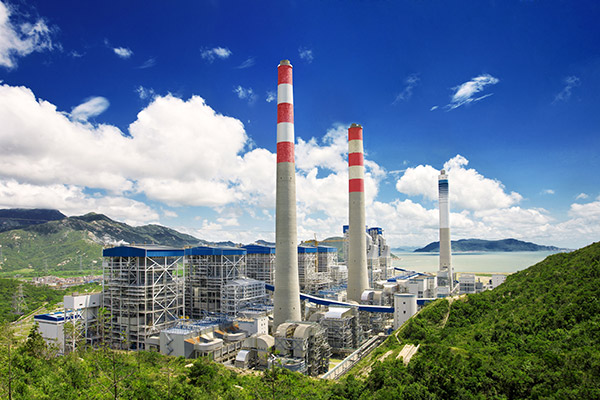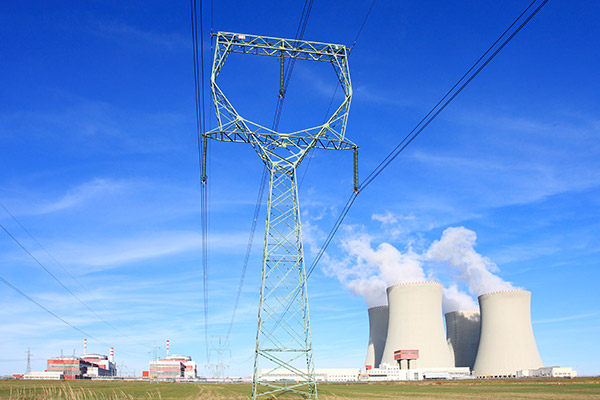
Location: 首页 > Applications > Power Industry

The electric power industry (electric power industry) converts primary energy sources such as coal, oil, natural gas, nuclear fuel, hydropower, marine energy, wind energy, solar energy, and biomass energy into electrical energy through power generation facilities, and then through power transmission, power transformation and distribution systems The industrial sector that supplies users as energy. The industrial sector that produces, transmits, and distributes electrical energy. Including power generation, transmission, transformation, power distribution and other links. The production process and consumption process of electric energy are carried out at the same time, which can neither be interrupted nor stored, and need to be dispatched and distributed in a unified manner. The electric power industry provides basic power for industry and other sectors of the national economy. Subsequently, a number of large and medium-sized hydropower stations have been built in areas where conditions are met, which are the leading sectors of national economic development.
The power industry mainly includes 5 production stages. ①Power generation, including thermal power, hydropower, nuclear power and other energy generation; ②Power transmission, including AC and DC transmission: ③Transformation; ④Distribution; ⑤Electricity, including the installation, use and load of electrical equipment The control of the power system and the power system that connects the equipment existing in these five stages. In addition, it also includes power infrastructure such as planning, survey design and construction, power science and technology research, and electrical machinery and equipment manufacturing.
China's electric power industry has implemented the policy of simultaneously developing hydropower and thermal power. In the early days of the founding of the People’s Republic of China, in order to cooperate with the construction of new industrial areas and ensure the use of electricity for industrial bases, the power industry mainly built thermal power stations in load areas and actively prepared conditions for the construction of hydropower stations. Subsequently, a number of large and medium-sized hydropower stations were built in areas where conditions are met, such as Xinanjiang, Liujiaxia, Danjiangkou, Gezhouba, and Wujiangdu hydropower stations. The construction of small hydropower has also been developed rapidly. In addition, without interruption, China is actively researching and developing nuclear energy, geothermal energy, biogas, wind, solar, and tidal energy.
China's electric power industry has implemented the policy of simultaneously developing hydropower and thermal power. In the early days of the founding of the People’s Republic of China, in order to cooperate with the construction of new industrial areas and ensure the use of electricity for industrial bases, the power industry mainly built thermal power stations in load areas and actively prepared conditions for the construction of hydropower stations. Subsequently, a number of large and medium-sized hydropower stations were built in areas where conditions are met, such as Xinanjiang, Liujiaxia, Danjiangkou, Gezhouba, and Wujiangdu hydropower stations. The construction of small hydropower has also been developed rapidly. In addition, without interruption, China is actively researching and developing nuclear energy, geothermal energy, biogas, wind, solar, and tidal energy.

During the "Eleventh Five-Year Plan" period, China will usher in a new upsurge in power grid construction. By 2010, the State Grid’s cross-regional power grid construction, the construction scale of AC UHV transmission lines will reach 4,200 kilometers, the transformation capacity will reach 39 million kVA, and the cross-regional power transmission capacity will reach 70 million kilowatts; in the construction of urban and rural power grids On the one hand, AC and DC transmission lines of 220 kV and above will exceed 340,000 kilometers, and the AC substation capacity will exceed 1.3 billion kVA.
The rapid development of the national economy has greatly promoted the rapid development of my country's power industry. Safety, economy, low pollution and water saving are the requirements of the new era for the development of my country's power industry. Under the current circumstances, my country must increase the proportion of electricity in the final energy consumption, reduce the use of coal as a terminal energy, and gradually optimize the energy structure of power generation, that is, optimize thermal power generation, vigorously develop hydropower, appropriately and actively build nuclear power, and actively develop and apply New energy sources such as wind energy, tidal energy and solar energy realize the diversification of power generation energy
As of the end of 2006, the national installed capacity of power generation reached 622 million kilowatts, a year-on-year increase of 20.3%. From the perspective of power production, the national power generation in 2006 reached 2,844.4 billion kilowatt-hours, an increase of 13.5% year-on-year. Among them, hydroelectric power generation was 416.7 billion kWh, accounting for 14.70% of all power generation, an increase of 5.1% year-on-year; thermal power generation was 2,357.3 billion kWh, accounting for 83.17% of all power generation, an increase of 15.3% year-on-year; nuclear power generation was 543 Billion kilowatt-hours, accounting for about 1.92% of all power generation, an increase of 2.4% year-on-year. In 2006, the electricity consumption of the whole society reached 2,824.8 billion kwh, a year-on-year increase of 14.0%, an increase of 0.4% over 2005
As of the end of 2007, the capacity of power generation equipment reached 713 million kilowatts, a year-on-year increase of 14.4%. In just one year, the national power installed capacity has achieved a leap from 600 million kilowatts to 700 million kilowatts. As of the end of 2007, the length of the national transmission lines of 220 kV and above reached 333,800 kilometers, an increase of 17.45%; the transformer capacity of 220 kV and above reached 1.160 billion kVA, an increase of 19.59%. The scale of power construction continues to be at a historically high level. The capacity of newly added (formally put into production) power generation equipment in basic construction throughout the year was basically the same as that in 2006, at 100.9 million kilowatts. The length of new transmission lines and substation capacity of the power grid both reached the highest level in history. An additional 41,334 kilometers of 220 kV and above power grid transmission lines were added, an increase of 6,490 kilometers over 2006; the substation capacity was 188.3 million kVA, an increase of 34.82 million kVA over 2006. As of the end of 2007, although the national power generation equipment capacity growth rate remained high, the growth rate was 6.2 percentage points lower than that in 2006. This is the first time the growth rate of power generation equipment capacity has fallen since 2002.
Power shortages in certain areas and certain periods of power supply and demand across the country will still exist. Coal-to-electricity connection, electricity price reform, and coordination of power sources and power grids are still issues that need to be further resolved in the development of the industry. Since the development of the industry is approaching an inflection point, power supply construction should choose projects that meet the scope of national policy support, and the investment value in the field of power grids is gradually showing.

 Jing12011202000600 Website construction: Fengsheng Technology
Jing12011202000600 Website construction: Fengsheng Technology
